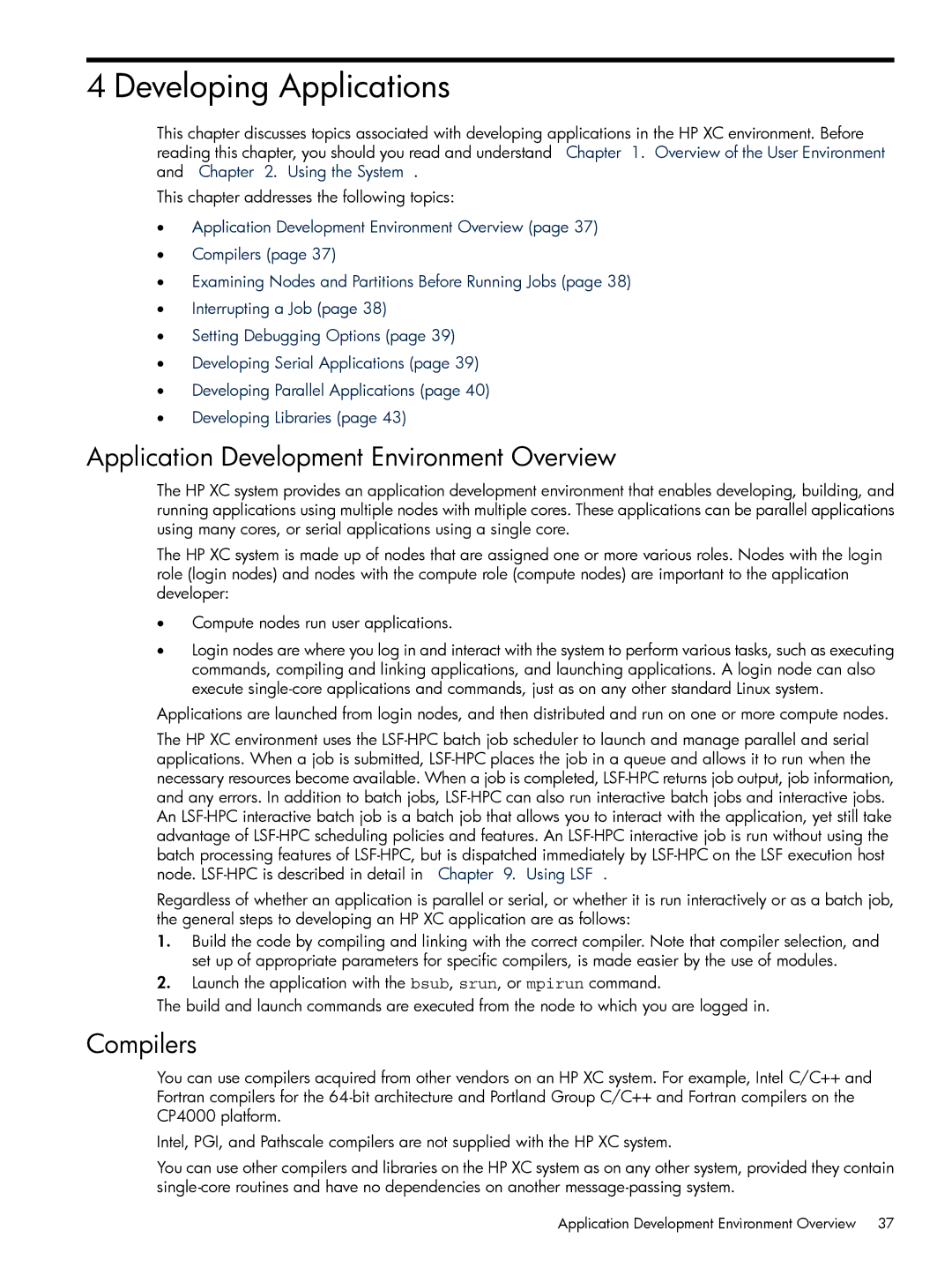4 Developing Applications
This chapter discusses topics associated with developing applications in the HP XC environment. Before reading this chapter, you should you read and understand Chapter 1. Overview of the User Environment and Chapter 2. Using the System .
This chapter addresses the following topics:
•Application Development Environment Overview (page 37)
•Compilers (page 37)
•Examining Nodes and Partitions Before Running Jobs (page 38)
•Interrupting a Job (page 38)
•Setting Debugging Options (page 39)
•Developing Serial Applications (page 39)
•Developing Parallel Applications (page 40)
•Developing Libraries (page 43)
Application Development Environment Overview
The HP XC system provides an application development environment that enables developing, building, and running applications using multiple nodes with multiple cores. These applications can be parallel applications using many cores, or serial applications using a single core.
The HP XC system is made up of nodes that are assigned one or more various roles. Nodes with the login role (login nodes) and nodes with the compute role (compute nodes) are important to the application developer:
•Compute nodes run user applications.
•Login nodes are where you log in and interact with the system to perform various tasks, such as executing commands, compiling and linking applications, and launching applications. A login node can also execute
Applications are launched from login nodes, and then distributed and run on one or more compute nodes.
The HP XC environment uses the
Regardless of whether an application is parallel or serial, or whether it is run interactively or as a batch job, the general steps to developing an HP XC application are as follows:
1.Build the code by compiling and linking with the correct compiler. Note that compiler selection, and set up of appropriate parameters for specific compilers, is made easier by the use of modules.
2.Launch the application with the bsub, srun, or mpirun command.
The build and launch commands are executed from the node to which you are logged in.
Compilers
You can use compilers acquired from other vendors on an HP XC system. For example, Intel C/C++ and Fortran compilers for the
Intel, PGI, and Pathscale compilers are not supplied with the HP XC system.
You can use other compilers and libraries on the HP XC system as on any other system, provided they contain
Application Development Environment Overview 37
